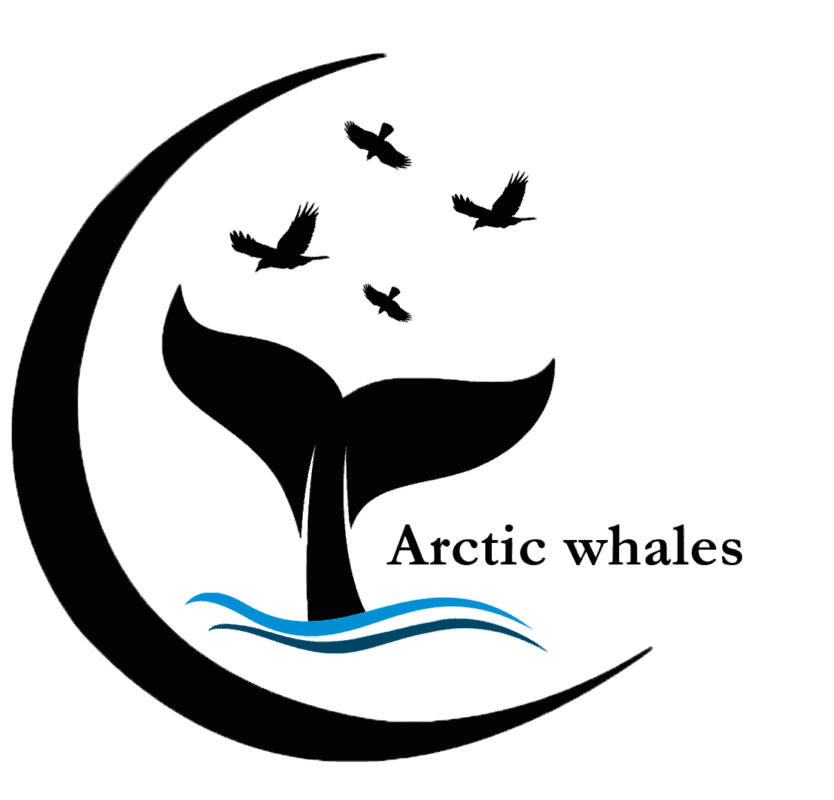No products in the cart.
The Whales of Iceland
Whales are beautiful animals and one of the nature’s most extraordinary sights.
Icelandic waters cover areas from the cold Arctic sea in the north, to the warmer North Atlantic Ocean in the south. The two mixing currents, the long summer daylight combined with the relatively shallow waters, makes an extremely favorable feeding area for the whales. Around Iceland, it is possible to find over 20 different species, 8 of which are frequently seen on whale watching tours.
FIN WHALE
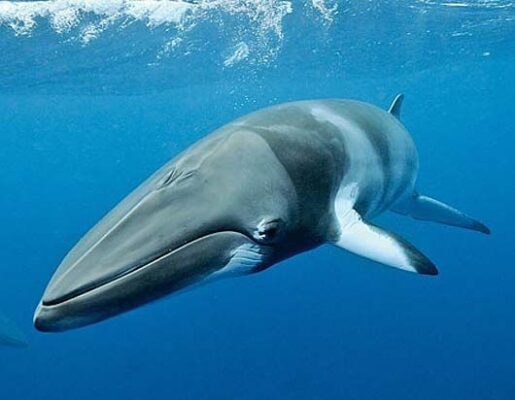
Size: up to 26 metres Weight: up to 80 tonnes Speed: up to 30 km/hour
Fin whales are the second largest whale species after the blue whale, therefore the second largest mammal on the planet. They stand out not only for their size but also for their immense blow that reaches upwards up to 9 metres. They are are sometimes referred to as razorbacks due to their distinct ridge along their back behind the dorsal fin.
They are on the IUCN’s red list of endangered species but have, even so, been commercially hunted in Icelandic waters. The Icelandic government justifies this hunt as regional status assessments show that there has not been a decline in the abundance of North Atlantic fin whales since the IUCN refernece point in 1920.
Fin whales are not commonly seen on whale watching tours in Iceland, occasionally in the north and south in the summer months (May/June to August/September) and in autumn south of Iceland (Reykjanes peninsula/Grindavík).
HUMPBACK WHALE
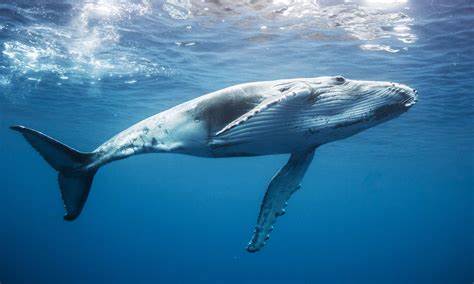
Size: up to 17 meters Weight: up to 30 tons Speed: 27 km/hour
A fully-grown humpback whale’s weight is almost equivalent to the weight of seven to nine full-grown elephants.
The pectoral fins (flippers) are approximately one-third of the animal’s body length, thus distinguishing it from other whales. In addition, humpback whales have distinctive long knobbly flippers; the bumps on their flippers are called tubercles and these assist them in forming tighter circles around their prey in the water.
The black and white pattern on the underside of the tail fluke is as unique as a fingerprint and enables scientists to distinguish individual whales. Male humpback whales sing very long and complex songs when they are on the breeding grounds and recent studies suggest suggesting singing in the sub-arctic waters around Iceland in winter as well.
Humpback whales are among the most active and acrobatic species of whale. They are most commonly seen on whale watching tours in the north of Iceland in summer months (April/May to September/October) although they’ve increasingly been seen in the south as well in late winter (January/February-March/April).
HARBOUR PORPOISE
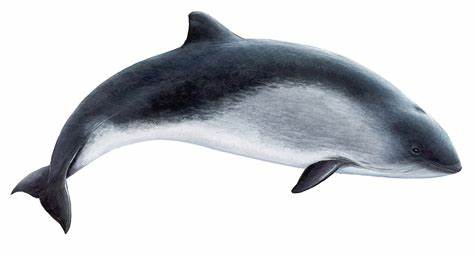
Size: up to 2 meters Weight: up to 70 kg Speed: 23 km/hour
The harbor porpoise is among the smallest of cetaceans, with a low, dark, triangular dorsal fin and small rounded head. It is difficult to observe unless conditions are very calm, and is often wary of boats. Porpoises are usually alone or in small groups. They often make a sharp puffing sound when surfacing to breathe (and in some places are known as Puffing Pigs).
They are abundant all around Iceland throughout the year but most commonly seen on whale watching tours in summer months (March/April to September/October).
ORCA

Size: up to 8 meters Weight: up to 8 tons Speed: up to 50 km/hour
Killer whales, also known as orca, are the largest member of the dolphin family.
The famous killer whale, Keiko (http://www.imdb.com/name/nm1430748/), was captured in Icelandic waters in 1979. After performing in marine parks Keiko became a film star in the 1993 movie Free Willy and he was eventually reintroduced to the wild in Icelandic waters in 1998. Another famous killer whale, Tilikum who was heavily featured in the documentary Blackfish (http://www.blackfishmovie.com/), was captured in Iceland in 1983 to perform in marine parks. Since 1988 no killer whales have been captured in Icelandic waters.
Given their social behavior killer whales are not at all suited for captivity. In the wild, killer whales have a global distribution and live in large, family groups called pods, which stay together for life and may develop their own unique dialect. In captivity, dorsal fins may collapse due to stress, however, a male orca that is not in captivity has a dorsal fin that can grow as tall as 1.8 meters.
Killer whales are commonly seen on whale watching tours in the west of Iceland in winter months (November/December to March/April) and early summer (April/May to June/July). They regularly saw south of Reykjanes peninsula and around Westman Islands in summer as well but there is no scheduled whale watching tours run in the area. Occasionally they’re seen in other areas throughout the year.
MINKE WHALE
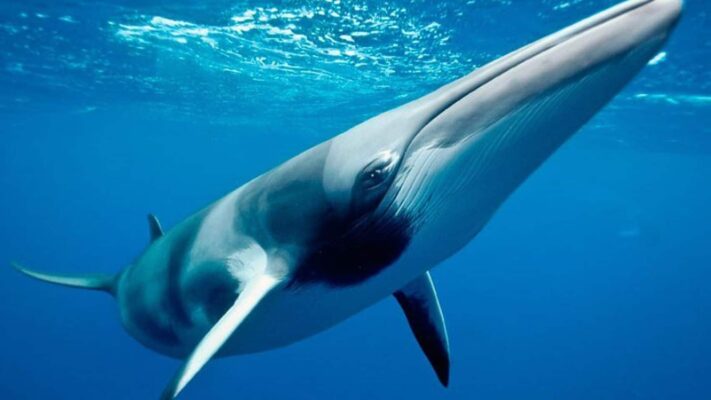
Size: up to 10 meters Weight: up to 8 tons Speed: up to 34 km/hour
Minke whales are the second smallest baleen whale in the world. They have a characteristic white band on each flipper, contrasting with their dark gray top color. They have around 300 pairs of baleen plates in their upper jaw which act like a strainer as the minke whales feed.
Around the world they are the most abundant baleen whale yet they remain mostly solitary, often traveling alone or in small pods of 2-3 animals. Recent environmental changes seem to have influenced their distribution around Iceland as less and fewer minke whales are found in the coastal waters. Despite these changes, minke whales are commercially hunted in Icelandic waters, mainly in south-west Iceland.
Minke whales can be inquisitive and approach vessels quite closely. They are most commonly seen on whale watching tours in South Iceland in summer months (March/April to September/October) but also quite regularly on tours from the north and west Iceland around the same time.
SPERM WHALE

Size: up to 20 meters Weight: up to 50 tons Speed: up to 30 km/hour
The sperm whale’s name derives from the spermaceti organ in its head. The famous whale of the novel Moby dick was a sperm whale. They are the largest of the toothed whales. One-third of their body’s length is their head, which contains sperm oil, prized for centuries and used to light lamps, for medicinal purposes, as a lubricant, and for cosmetics.
They mainly feed on squid and are thus usually found in very deep waters. Because of the depth, they reach they can remain submerged for up to an hour.
Sperm whales are most commonly seen on whale watching tours from West Iceland in late spring and early summer (April/May to August/September) although they’ve also rarely been seen in North as well (Skjálfandi bay/Húsavík). The sperm whales around Iceland are males or bulls.
WHITE-BEAKED DOLPHIN
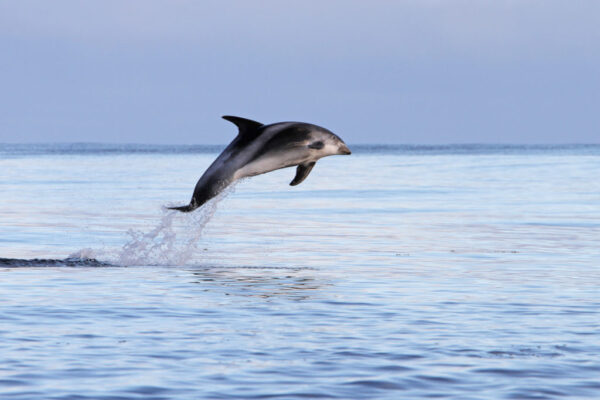
Size: up to 3 meters Weight: up to 180-300 kg Speed: 20 km/hour
White-beaked dolphins are a robust species of dolphin with a short beak. They are characterized by their short thick creamy-white beak and very falcate (curved) dorsal fin. Iceland is one of few places where you can see this charismatic species as they are only found in the North Atlantic Ocean, North Sea and the Barents Sea. They bow ride, breach (leap from the water) as other dolphin species do; however they are not considered to be as agile as some species.
They are abundant all around Iceland throughout the year and commonly seen on whale watching tours but most commonly seen in large pods with their calves in late winter (February/March).
BLUE WHALE

Size: up to 27 meters Weight: up to 120 tons Speed: 39 km/hour
The blue whale is the largest animal known to have lived, even bigger than the largest dinosaurs. Its fluke (tail) is as wide as a football net (eight meters) and its length can reach the equivalent of seven Volkswagen Beetles lined up together. Also, the mouth of a blue whale is big enough to park a car in it.
Blue whales are long and slender. They have a unique mottling on their bodies, spots, and blotches of different shapes and colors. Scientists use these patterns to identify individuals.
The traveling pattern of blue whales is characterized by rapid sprints, while they can dwell in restricted areas for several days, most likely for food gathering. Few blue whales have been satellite tagged in Icelandic waters to study their migrating pattern, see for example blue whale 1 in 2014 and blue whale 2 in 2014.
Blue whales are most commonly seen on whale watching tours from North Iceland in late spring and early summer (April/May to August/September) although they’ve also sometimes been seen on tours from west of Iceland (Snæfellsnes peninsula/Ólafsvík) and in autumn south of Iceland (Reykjanes peninsula/Grindavík).
